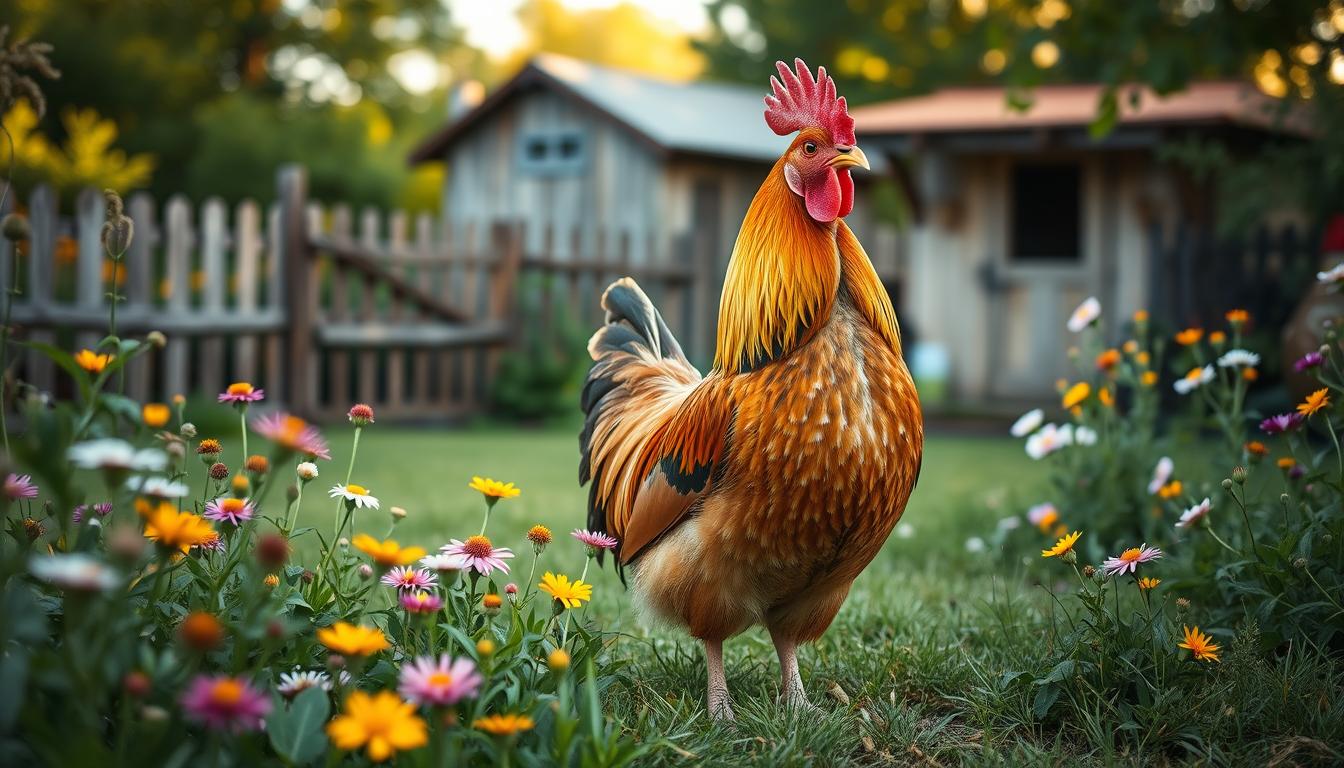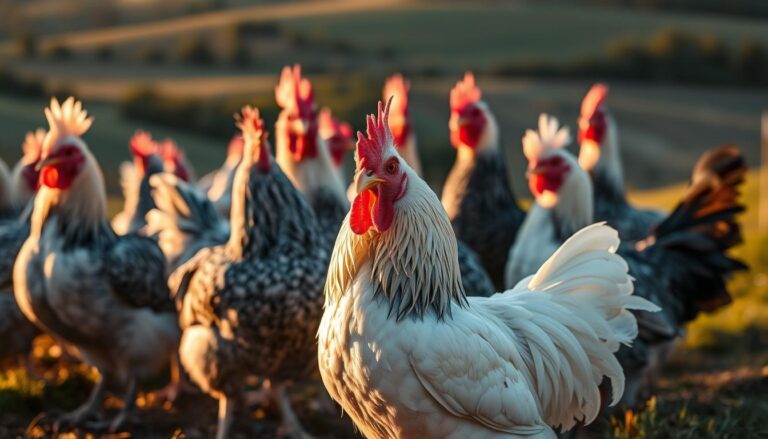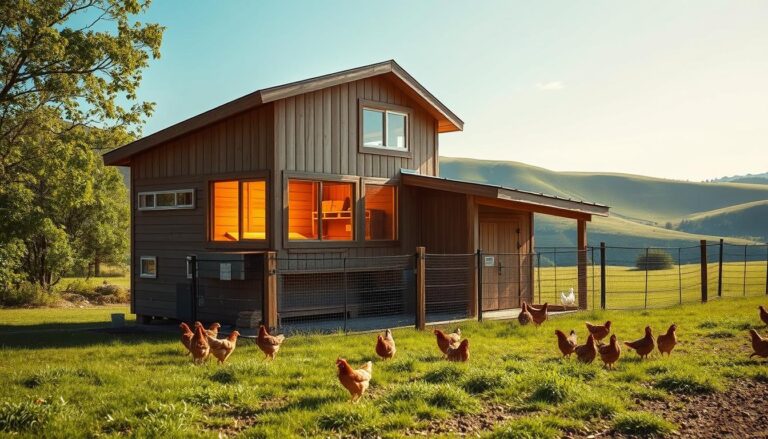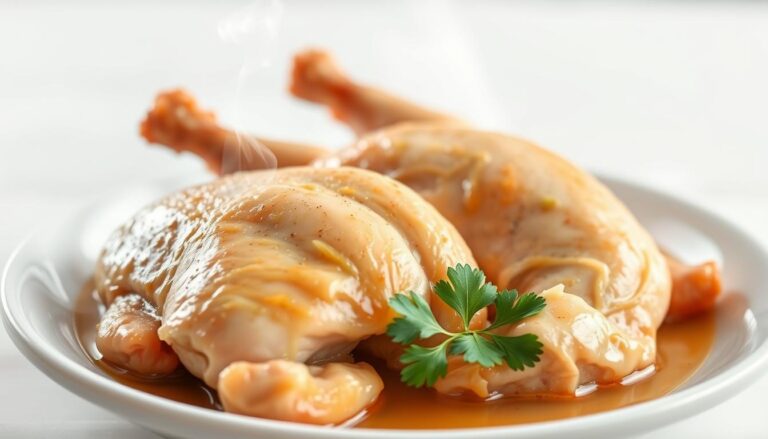Discover the Charm of the Polish Hen
Table of Contents
Discover the Charm of the Polish Hen
Looking for a unique addition to your backyard flock? These crested chickens stand out with their eye-catching pom-pom feathers and friendly personalities. Their striking appearance makes them a favorite among poultry lovers.
Originally from Europe, this breed has been charming chicken keepers since the 15th century. Their popularity grew in America during the 1840s, and they remain sought-after today. What makes them special? They combine beauty with practical benefits.
These birds aren’t just pretty faces. They lay about 150-200 eggs annually and help control pests in your yard. Their gentle nature makes them perfect for families. Cold-hardy and peaceful, they get along well with other chickens too.
Key Takeaways
- Distinctive crested appearance sets them apart from common breeds
- Produce a moderate amount of eggs each year
- Excellent choice for family-friendly flocks
- Rich history dating back to 15th century Europe
- Low-maintenance birds that thrive in various climates
The Fascinating History of Polish Hens
Ever wondered how a chicken breed got named after a country it might not be from? Their story blends trade routes, royal intrigue, and a dash of mistaken identity. These crested birds have been turning heads since the 1400s.
Origins and European Roots
Art from the Netherlands and Italy first depicted these chickens over 600 years ago. Some theories trace their crest to Mongol migrations, while others credit Spanish-Dutch trade. The name “Polish” likely came from Dutch slang (“Pol” meaning large head) or Polish soldiers’ feathered hats.
In 1736, exiled King Stanislaw Leszczyński introduced them to the French court. Aristocrats adored their quirky looks, dubbing them “poulettes Pompadour” after Madame de Pompadour. By the 19th century, they were a staple in European poultry yards.
Arrival in the United States
These polish chickens crossed the Atlantic in the 1830s. Farmers prized them for their eggs and pest control skills. But their popularity dipped when Leghorns arrived—a faster-laying breed. The Livestock Conservancy later revived interest in the 20th century.
Cultural Significance and Names
Over the years, they’ve been called “Tophat,” “Paduan,” and even “Poland” chickens. Darwin classified them among crested breeds in his studies. Officially recognized in the 1874 APA Standard of Perfection, they’re now show-ring stars and backyard favorites.
The Unique Appearance of Polish Hens
What makes these crested chickens instantly recognizable? Their pom-pom feathers aren’t just decorative—they’re rooted in a permanent bony skull protrusion. This standout feature demands occasional trimming to prevent vision obstruction.
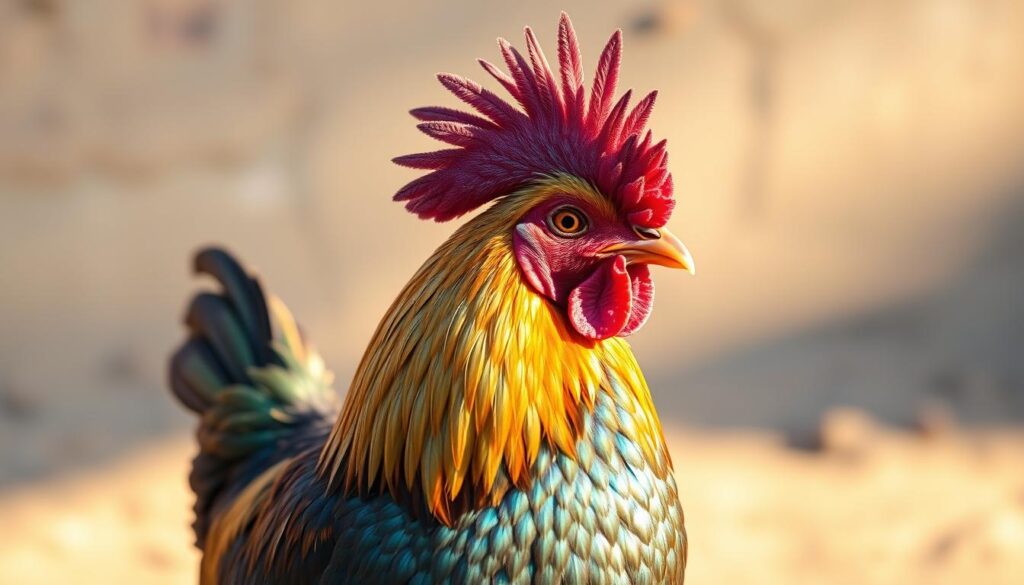
Crested Feathers: A Signature Trait
The crest grows from a head bump unique to this breed. Unlike temporary molts, this structure lasts a lifetime. Hens with fuller crests may need extra care—predator-proof coops are essential due to limited peripheral vision.
Color Varieties and Patterns
From Buff Laced to White Crested Blue, their color diversity rivals their history. Rare types like Tolbunt Polish boast frizzle feathers, while Silver Laced varieties shimmer in sunlight. Most weigh 4.5–6 lbs, with upright postures accentuating their plumes.
Bearded vs. Non-Bearded Polish Hens
Bearded breeds flaunt fluffy facial feathers, adding whimsy. Non-bearded types showcase sleeker profiles. Both share the same crest feathers, but bearded hens often require more grooming to keep their head plumage tidy.
Personality and Temperament
Behind the quirky feathers lies a personality full of surprises. These crested birds are beloved for their docile nature and playful antics, though their limited vision requires some extra consideration.
Gentle and Docile Nature
They’re often compared to puppies for their friendly demeanor. *”Cotton”*, a favorite in a Texas backyard, follows her owner like a shadow, pecking gently at shoelaces. Unlike aggressive breeds, they rarely spar with flock mates.
Their calm personality makes them ideal for families. Sudden movements may startle them, so talk softly when approaching. Many owners report their birds tilting heads to listen—a sign of curiosity.
Social Behavior in Flocks
In flock settings, they adopt nurturing roles. Older hens often guard chicks, earning the nickname *”aunt hens”*. *”Fluffy”*, a bearded variety, became famous in Oregon for herding younger birds to safety during rainstorms.
They thrive in peaceful groups but struggle with bossy breeds. Mix them with similar-tempered birds to avoid stress. Their playful side shines during dust baths, where they wiggle like happy toddlers.
Challenges Due to Limited Vision
Their crests obscure vision, making them vulnerable to predators. Aerial attacks are a real threat, so secure coops with roofs. Despite this, they adapt well to cold weather, fluffing feathers for insulation.
Trim overgrown crest feathers monthly to improve sightlines. One Minnesota owner shares: *”After a trim, my bird finally noticed the mealworms I’d been offering for weeks!”*
Egg Production and Practical Uses
While known for their looks, these chickens also offer practical benefits in the coop. Their egg production balances ornamental appeal with homestead functionality. You’ll get consistent yields without the broodiness common in other breeds.
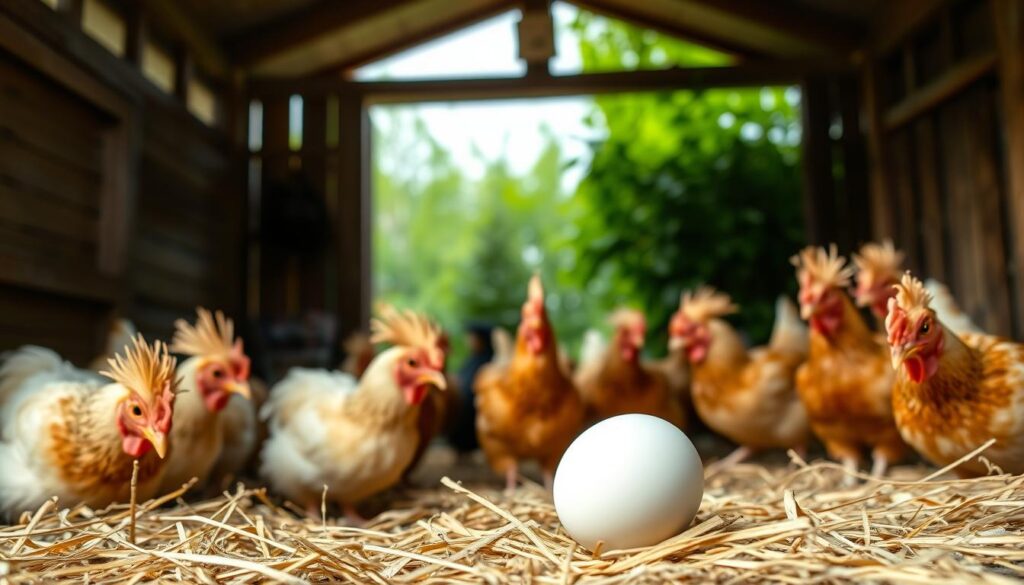
Egg Color and Annual Yield
Expect 150-200 white or cream-colored eggs per year. The shells tend to be slightly thicker than average, helping prevent cracks. *”Tina Turner”*, a famous bird in Ohio, laid 192 eggs last year despite her fancy plumage.
Supplemental lighting during winter maintains production. Aim for 14 hours of light daily. Some owners report smaller eggs in colder months, but quality remains consistent.
How They Compare to Other Breeds
They outproduce Cochins (100-160 eggs) but can’t match Leghorns (280-320). This makes them ideal for small farms prioritizing aesthetics. Their egg production satisfies family needs without overwhelming you.
Genetic focus on feather varieties means they’ll never be commercial layers. As one breeder notes: “They’re the decorative shrubs of the chicken world—pretty and productive enough.”
Non-Broody Tendencies
Only 5% show nesting instincts, unlike Orpingtons or Silkies. This means steady egg production without interruptions. A rare exception was *”Garbo”*, who surprised her owner by brooding under a honeysuckle bush.
If you want chicks, consider an incubator. Their disinterest in motherhood makes them low-maintenance layers. This trait also reduces stress in mixed flocks.
For those wanting both beauty and utility, these birds deliver. They won’t replace your egg business, but they’ll keep your kitchen stocked while turning heads.
Health and Care for Polish Hens
Keeping crested chickens thriving requires special attention to their unique needs. Their signature pom-pom feathers and gentle nature come with specific health considerations. With proper care, these birds can live 5-8 years—here’s how to ensure their well-being.
Crest and Eye Maintenance
Their fluffy crests need weekly checks for mites or debris. Use rounded scissors to trim overgrown feathers blocking vision. “Always cut in daylight to avoid accidents,” advises My Pet Chicken’s starter guide.
Omega-3 supplements boost feather health. Avoid damp bedding—it increases respiratory risks. A clean, dry coop prevents common issues.
Predator Protection Strategies
Limited vision makes them vulnerable to predators. Reinforce coops with hardware cloth instead of chicken wire. Motion-activated lights deter nocturnal hunters.
| Deterrent | Effectiveness | Cost |
|---|---|---|
| Hardware cloth coops | High | $$ |
| Motion lights | Medium | $ |
| Guard animals | High | $$$ |
Cold Weather Adaptations
Despite cold tolerance, combs are prone to frostbite. Apply Vaseline during freezing weather. Straw-insulated housing retains warmth.
Monitor water sources—they freeze faster than standard breeds’ needs. A heated base prevents dehydration in winter.
“Their crests trap warmth but need dryness. Always prioritize ventilation to avoid moisture buildup.”
Conclusion: Why Polish Hens Belong in Your Backyard
These crested chickens bring art and function to your backyard. Their pom-pom feathers add charm while their pest control skills keep gardens healthy. They’re the perfect mix of beauty and purpose.
Low-maintenance beyond crest care, they fit busy lifestyles. Cold-hardy and peaceful, they thrive in mixed flocks. Their friendly nature makes them ideal for families and first-time owners.
By choosing this breed, you support rare-bird conservation. Their unique look sparks conversations with neighbors and fellow poultry lovers. It’s a chance to connect with a community that values heritage breeds.
Ready to welcome these eye-catching birds? Explore My Pet Chicken’s Polish chick offerings today. Your backyard will thank you.
FAQ
What makes Polish chickens stand out?
How many eggs do they lay each year?
Are they good for beginners?
Do they need special grooming?
Can they handle cold weather?
What colors do they come in?
Are they noisy birds?
How long do they typically live?
For more cooking tips, stay connected with us. We also recommend the cookbook Skinnytaste Simple: Easy, Healthy Recipes with 7 Ingredients or Fewer
For more Recipes about Chicken

